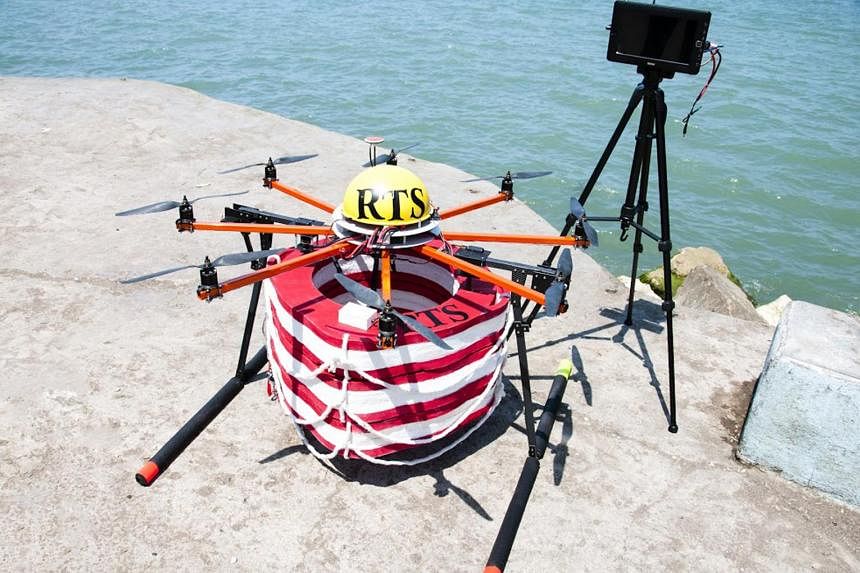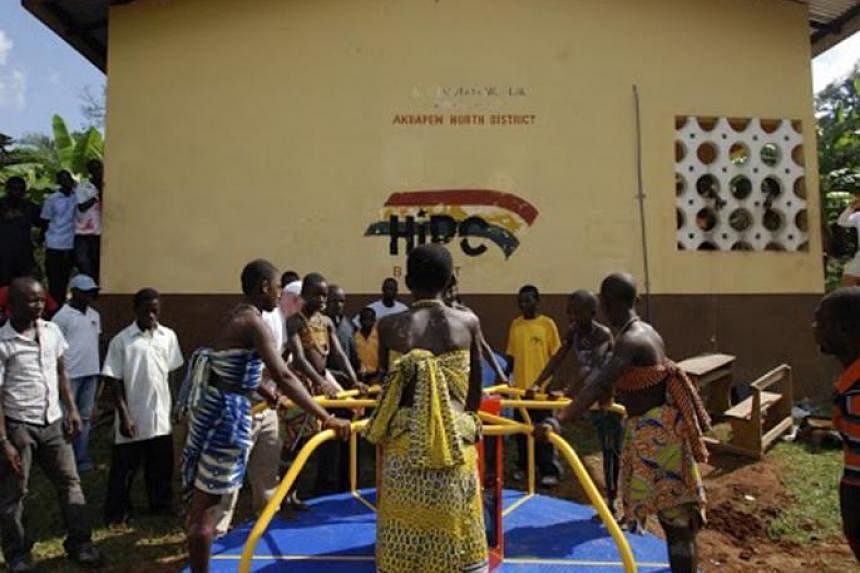MOVE over Baywatch. An Iranian robotics engineer has come up with a life-saving drone that is three times faster than a human lifeguard.
Mr Amin Rigi, 28, hopes his invention can change the public's perception of drones which are still regarded with suspicion.
Mr Rigi's drone was initially designed to fly above the sea and drop up to three lifebuoys to drowning victims.
The latest iteration of his robotic lifeguard, however, can convert itself into a hovercraft and bring a potential victim back to the shore.
"We think we can reduce the number of drownings and we can save lives," said Mr Rigi, who operates from a 250-sq m London coworking space for startups.
He hopes his devices can later be used to aid people who fall overboard from ships as well as those involved in car accidents, floods and fires, or people injured on hikes or stranded on oil rigs.
"We are thinking of drones that can actually be part of rescue missions," he said.
Roboguard, his most recent model, is waterproof and can land on and take off from the water surface. It can carry up to 15kg of equipment and move at speeds of up to 50kmh.
It can be outfitted with thermal cameras to aid in night-time rescues. It also comes with detachable arms and functions with more autonomy, relying more on GPS than on manual control.
Mr Rigi hopes he can come up with a solarpowered landing platform where the drone can recharge its batteries.
Two summers ago, successful trials of his rescue drone were carried out in the Caspian Sea, where hundreds drown each year.
The trials included a race between the drone and a human lifeguard. His first prototype named Pars, after the ancient kingdom of Persia, reached a potential victim three times faster than its human counterpart, in 22 seconds instead of 90 seconds.
Today, the rescue drone is on the verge of test production, with a first limited run of about 200.
Distributors from Brazil, Italy and Mexico have already bought the drone, priced at about €8,000 (S$12,000). Customers from eight other countries, including Australia, Latvia and the United States, are in negotiations to buy it.
Mr Rigi started RTS Ideas in Iran, but relocated his company to London last year, after he was accepted to Sirius, an accelerator programme that brings young entrepreneurs to Britain to help them launch their businesses. Now he receives help with living expenses, office space, mentoring and access to investors.
Said Mr Rigi: "It's not a matter of drones being good or bad. It's a matter of why we are misusing these technologies."
MILDRADE CHERFILS/RTS IDEAS /SPARKNEWS


